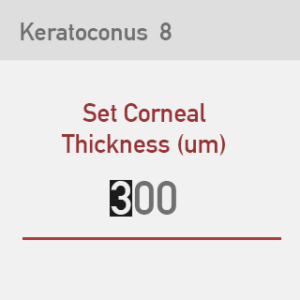
- About
- Distributors
- Contact
 English
EnglishChoisissez votre langue Scegliete la vostra lingua Wählen Sie Ihre Sprache Escolha o seu idioma 言語を選択してください 选择你的语言 Choose your language
Menu

C-eye Device has a number of preset CXL and PACK-CXL epi-on and epi-off protocols available for your convenience.
Please find below a summary of the recommendations and uses of corneal cross-linking settings displayed in the scientific literature.

3. Kymionis GD, Tsoulnaras KI, Grentzelos MA, Plaka AD, Mikropoulos DG, Liakopoulos DA, Tsakalis NG, and Pallikaris IG. Corneal stroma demarcation line after standard and high-intensity collagen crosslinking determined with anterior segment optical coherence tomography. J Cataract Refract Surg. 2014. 40(5): 736-40

Corneal collagen cross-linking for Terrien marginal degeneration. J Refract Surg. 2014. 30(7): 498-500
The effect of standard and high-fluence corneal cross-linking (CXL) on cornea and limbus. Invest Ophthalmol Vis Sci. 2014. 55(9): 5783-7
An Algorithm to Predict the Biomechanical Stiffening Effect in Corneal Cross-linking. J Refract Surg. 2017. 33(2): 128-36
Individualized Corneal Cross-linking With Riboflavin and UV-A in Ultrathin Corneas: The Sub400 Protocol. Am J Ophthalmol. 2021. 224: 133-42
Corneal Cross-linking for Keratoglobus Using Individualized Fluence. J Refr Surg Case Rep. 2021. 1(1): e10-e14